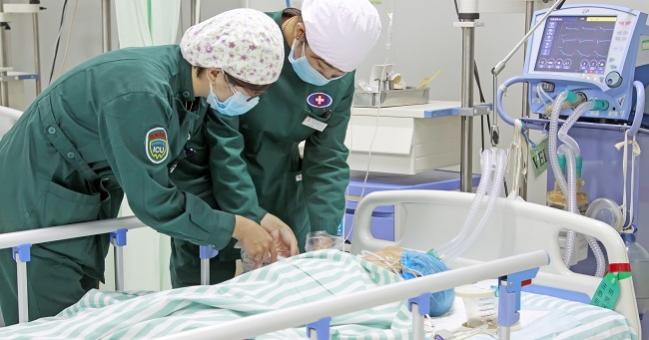Hospital Readmission Patterns Post-MI in China Differ Markedly From in the US
The study highlights the “global burden” of readmissions following acute MI, one expert says.

New research out of China is shining a light on hospital readmissions following acute MI, suggesting that the reasons why patients return to hospitals in China after their events are markedly different than those seen elsewhere.
The study is important because “it highlights the global burden of readmissions after acute cardiovascular conditions,” said Ambarish Pandey, MD (University of Texas Southwestern Medical Center, Dallas, TX), who was not involved with the study, in an interview with TCTMD.
For the subanalysis of the China PEACE study, researchers led by Jing Li, MD, PhD (China National Center for Cardiovascular Disease, Beijing), looked at 3,387 patients who had an acute MI between December 2012 and June 2014. Presenting their results during a poster session this week at the ACC Asia Pacific conference in Shanghai, China, Li reported that 6.3% of patients had an unplanned hospital readmission within 30 days and that 77.7% of them were due to cardiac reasons. Almost half of all readmissions (41.9% of all-cause and 44.3% of cardiac) occurred within 5 days of discharge. Of note, the mean hospital length of stay in this study was 11 days and 76.9% patients were men.
Predictors of cardiovascular readmission included Killip IV classification (RR 2.14; 95% CI 1.13-4.06) and mini-GRACE score at admission (RR 1.12 for every 10-point increase; 95% CI 1.03-1.21) as well as LVEF < 0.4 (RR 1.82; 95% CI 1.07-3.10). Revascularization performed during the index hospitalization was associated with lower risks of both all-cause (RR 0.34; 95% CI 0.23-0.50) and cardiovascular readmission and (RR 0.33; 95% CI 0.21-0.51).
Comparisons With the US
Li told TCTMD in an email that while these findings are only preliminary and a manuscript is forthcoming, he is surprised that “that patterns of readmission in China differ substantially from the US with respect to their rates, timing, and diagnoses.”
Pandey specified that the 6.3% readmission rate is “a much lower number” than what is observed in the United States, which is usually around 15-20%. However, the fact that the study found such a high proportion of cardiac readmissions—compared with the around 50% usually seen in the United States—suggests that there might be a methodological issue with the data capture, in that patients in China who are rehospitalized for noncardiac reasons are potentially not documented well enough, he said.
Also, “the profile of disease could be different [in that] the presentation could be more severe as compared with what we see in the US,” according to Pandey. “What ends up happening is that you have more downstream heart failure or more downstream repeat MI that could be leading to more cardiovascular admissions than what we see here.”
This study should “help illuminate opportunities to predict and reduce early readmission after [acute] MI in China,” Li said. “Our findings can facilitate targeting strategies, such as providing transitional care or early appointments to high-risk patients, to prevent early readmission after [acute] MI in the context of the long lengths of stay.”
Pandey agreed. Readmissions after acute MI are a worldwide problem, he said, “and I think there needs to be a more focused approach towards preventing them.” Suggestions he had for doing so would be to “improve the transition of care” from inpatient to outpatient after MI and to ensure that patients receive all guideline-recommended therapies and a comprehensive care plan at discharge.
Within the US, much attention has been paid the last few years on reducing readmissions after acute MI through incentives and penalties, Pandey noted. This sort of approach “may be successful in China as well,” he said.
Yael L. Maxwell is Senior Medical Journalist for TCTMD and Section Editor of TCTMD's Fellows Forum. She served as the inaugural…
Read Full BioSources
Li J. Early Hospital Readmission after Acute Myocardial Infarction in China. Presented at: ACC Asia Pacific Conference. December 2, 2017. Shanghai, China.
Disclosures
- Li and Pandey report no relevant conflicts of interest.


Comments